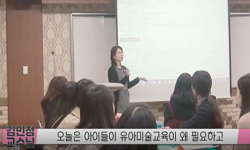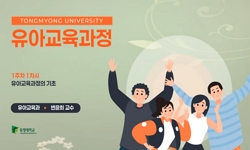Background: Although the overall survival of childhood acute lymphoblastic leukemia (ALL) approaches 85-90%, the prognosis of relapsed or refractory (R/R) ALL is grave. This study aimed to identify the treatment pattern, treatment response, and overal...
http://chineseinput.net/에서 pinyin(병음)방식으로 중국어를 변환할 수 있습니다.
변환된 중국어를 복사하여 사용하시면 됩니다.
- 中文 을 입력하시려면 zhongwen을 입력하시고 space를누르시면됩니다.
- 北京 을 입력하시려면 beijing을 입력하시고 space를 누르시면 됩니다.

재발성/불응성 소아 급성림프모구백혈병 환자의 치료 경향 및 성적에 대한 다기관 후향적 관찰 연구 = A Multicenter Retrospective Analysis on the Treatment Pattern and Outcome in Relapsed/Refractory Childhood Acute Lymphoblastic Leukemia
한글로보기https://www.riss.kr/link?id=A106147089
- 저자
- 발행기관
- 학술지명
- 권호사항
-
발행연도
2017
-
작성언어
Korean
- 주제어
-
등재정보
KCI등재
-
자료형태
학술저널
-
수록면
101-106(6쪽)
-
KCI 피인용횟수
0
- DOI식별코드
- 제공처
- 소장기관
-
0
상세조회 -
0
다운로드
부가정보
다국어 초록 (Multilingual Abstract)
Methods: We reviewed data of 64 patients with R/R ALL whose initial diagnosis of ALL had been made between 1 and 21 years of age. Patients who received clofarabine as part of an induction regimen were excluded. Relapsed patients were limited to those who relapsed after ≥2 prior induction regimens. Treatment patterns, response rates, and overall survival were analyzed.
Results: Patients’ median age was 15.0 years (range, 6.0-25.0) at the diagnosis of R/R ALL. The most frequently used agents other than steroid were vincristine (54.0%), cytarabine (44.6%), and idarubicin (36.5%), while L-asparaginase was used in only one patient. The complete remission (CR) and overall response (OR) rates were 38.1 and 42.9%, respectively. Sixteen patients (25.4%) underwent allogeneic hematopoietic stem cell transplantation (HSCT). The 5-year overall survival was 6.7%. The survival of patients with HSCT was significantly higher compared with those without HSCT (35.2% vs 0%, P=0.0097). Among 14 patients who achieved CR or CR without platelet recovery (CRp) before HSCT, the 3-year survival was 46.9%.
Conclusion: The survival of Korean patients with R/R childhood ALL was dismal despite a reasonable CR rate, whereas that of those who received HSCT after CR or CRp was excellent. More treatment options are needed to improve the overall outcome of R/R childhood ALL.
Background: Although the overall survival of childhood acute lymphoblastic leukemia (ALL) approaches 85-90%, the prognosis of relapsed or refractory (R/R) ALL is grave. This study aimed to identify the treatment pattern, treatment response, and overall survival of these patients.
Methods: We reviewed data of 64 patients with R/R ALL whose initial diagnosis of ALL had been made between 1 and 21 years of age. Patients who received clofarabine as part of an induction regimen were excluded. Relapsed patients were limited to those who relapsed after ≥2 prior induction regimens. Treatment patterns, response rates, and overall survival were analyzed.
Results: Patients’ median age was 15.0 years (range, 6.0-25.0) at the diagnosis of R/R ALL. The most frequently used agents other than steroid were vincristine (54.0%), cytarabine (44.6%), and idarubicin (36.5%), while L-asparaginase was used in only one patient. The complete remission (CR) and overall response (OR) rates were 38.1 and 42.9%, respectively. Sixteen patients (25.4%) underwent allogeneic hematopoietic stem cell transplantation (HSCT). The 5-year overall survival was 6.7%. The survival of patients with HSCT was significantly higher compared with those without HSCT (35.2% vs 0%, P=0.0097). Among 14 patients who achieved CR or CR without platelet recovery (CRp) before HSCT, the 3-year survival was 46.9%.
Conclusion: The survival of Korean patients with R/R childhood ALL was dismal despite a reasonable CR rate, whereas that of those who received HSCT after CR or CRp was excellent. More treatment options are needed to improve the overall outcome of R/R childhood ALL.
참고문헌 (Reference)
1 김혜리, "소아 급성백혈병 치료의 최신지견" 대한의사협회 59 (59): 690-697, 2016
2 Liu AP, "Refractory acute lymphoblastic leukemia in Chinese children: bridging to stem cell transplantation with clofarabine, cyclophosphamide and etoposide" 95 : 501-507, 2016
3 Pui CH, "Recent research advances in childhood acute lymphoblastic leukemia" 109 : 777-787, 2010
4 Jeha S, "Phase II study of clofarabine in pediatric patients with refractory or relapsed acute lymphoblastic leukemia" 24 : 1917-1923, 2006
5 von Stackelberg A, "Phase I/phase II study of blinatumomab in pediatric patients with relapsed/refractory acute lymphoblastic leukemia" 34 : 4381-4389, 2016
6 Hijiya N, "Phase 2 trial of clofarabine in combination with etoposide and cyclophosphamide in pediatric patients with refractory or relapsed acute lymphoblastic leukemia" 118 : 6043-6049, 2011
7 Ko RH, "Outcome of patients treated for relapsed or refractory acute lymphoblastic leukemia: a Therapeutic Advances in Childhood Leukemia Consortium study" 28 : 648-654, 2010
8 Einsiedel HG, "Longterm outcome in children with relapsed ALL by risk-stratified salvage therapy: results of trial acute lymphoblastic leukemia-relapse study of the Berlin-Frankfurt-Münster Group 87" 23 : 7942-7950, 2005
9 Atta EH, "Less graft-versus-host disease after rabbit antithymocyte globulin conditioning in unrelated bone marrow transplantation for leukemia and myelodysplasia: comparison with matched related bone marrow transplantation" 9 : e107155-, 2014
10 Ceppi F, "Improvement of the outcome of relapsed or refractory acute lymphoblastic leukemia in children using a risk-based treatment strategy" 11 : e0160310-, 2016
1 김혜리, "소아 급성백혈병 치료의 최신지견" 대한의사협회 59 (59): 690-697, 2016
2 Liu AP, "Refractory acute lymphoblastic leukemia in Chinese children: bridging to stem cell transplantation with clofarabine, cyclophosphamide and etoposide" 95 : 501-507, 2016
3 Pui CH, "Recent research advances in childhood acute lymphoblastic leukemia" 109 : 777-787, 2010
4 Jeha S, "Phase II study of clofarabine in pediatric patients with refractory or relapsed acute lymphoblastic leukemia" 24 : 1917-1923, 2006
5 von Stackelberg A, "Phase I/phase II study of blinatumomab in pediatric patients with relapsed/refractory acute lymphoblastic leukemia" 34 : 4381-4389, 2016
6 Hijiya N, "Phase 2 trial of clofarabine in combination with etoposide and cyclophosphamide in pediatric patients with refractory or relapsed acute lymphoblastic leukemia" 118 : 6043-6049, 2011
7 Ko RH, "Outcome of patients treated for relapsed or refractory acute lymphoblastic leukemia: a Therapeutic Advances in Childhood Leukemia Consortium study" 28 : 648-654, 2010
8 Einsiedel HG, "Longterm outcome in children with relapsed ALL by risk-stratified salvage therapy: results of trial acute lymphoblastic leukemia-relapse study of the Berlin-Frankfurt-Münster Group 87" 23 : 7942-7950, 2005
9 Atta EH, "Less graft-versus-host disease after rabbit antithymocyte globulin conditioning in unrelated bone marrow transplantation for leukemia and myelodysplasia: comparison with matched related bone marrow transplantation" 9 : e107155-, 2014
10 Ceppi F, "Improvement of the outcome of relapsed or refractory acute lymphoblastic leukemia in children using a risk-based treatment strategy" 11 : e0160310-, 2016
11 윤종형, "Improvement of Induction Remission Rate by Modifying the Dose of Idarubicin for Relapsed Childhood Acute Lymphoblastic Leukemia" 대한의학회 24 (24): 281-288, 2009
12 Kim SS, "Ifosfamide and etoposide in relapsed refractory childhood acute lymphoblastic leukemia" 4 : 90-97, 1997
13 Bernstein ML, "Idarubicin and cytosine arabinoside reinduction therapy for children with multiple recurrent or refractory acute lymphoblastic leukemia:a Pediatric Oncology Group study" 19 : 68-72, 1997
14 Inagaki J, "Hematopoietic stem cell transplantation following unsuccessful salvage treatment for relapsed acute lymphoblastic leukemia in children" 62 : 674-679, 2015
15 Trioche P, "French 'real life' experience of clofarabine in children with refractory or relapsed acute lymphoblastic leukaemia" 1 : 39-, 2012
16 Lu A, "Efficacy, safety and pharmacokinetics of clofarabine in Chinese pediatric patients with refractory or relapsed acute lymphoblastic leukemia: a phase II, multi-center study" 6 : e400-, 2016
17 Sakaguchi H, "Comparison of donor sources in hematopoietic stem cell transplantation for childhood acute leukemia: A Nationwide Retrospective Study" 22 : 2226-2234, 2016
18 Hijiya N, "Clofarabine in pediatric acute leukemia:current findings and issues" 59 : 417-422, 2012
19 Angiolillo AL, "A phase II study of Campath-1H in children with relapsed or refractory acute lymphoblastic leukemia: a Children's Oncology Group report" 53 : 978-983, 2009
동일학술지(권/호) 다른 논문
-
- 대한소아혈액종양학회
- 천은재
- 2017
- KCI등재
-
- 대한소아혈액종양학회
- 허민우
- 2017
- KCI등재
-
Differences in Mobilization Efficiency between Small Children and Adults with Healthy Marrows
- 대한소아혈액종양학회
- 신은경
- 2017
- KCI등재
-
- 대한소아혈액종양학회
- 김유선
- 2017
- KCI등재
분석정보
인용정보 인용지수 설명보기
학술지 이력
| 연월일 | 이력구분 | 이력상세 | 등재구분 |
|---|---|---|---|
| 2023 | 평가예정 | 재인증평가 신청대상 (재인증) | |
| 2020-01-01 | 평가 | 등재학술지 선정 (재인증) |  |
| 2019-12-01 | 평가 | 등재후보로 하락 (계속평가) |  |
| 2016-01-01 | 평가 | 등재학술지 선정 (계속평가) |  |
| 2014-01-01 | 평가 | 등재후보학술지 선정 (신규평가) |  |
학술지 인용정보
| 기준연도 | WOS-KCI 통합IF(2년) | KCIF(2년) | KCIF(3년) |
|---|---|---|---|
| 2016 | 0.1 | 0.1 | 0 |
| KCIF(4년) | KCIF(5년) | 중심성지수(3년) | 즉시성지수 |
| 0 | 0 | 0 | 0 |




 KCI
KCI







